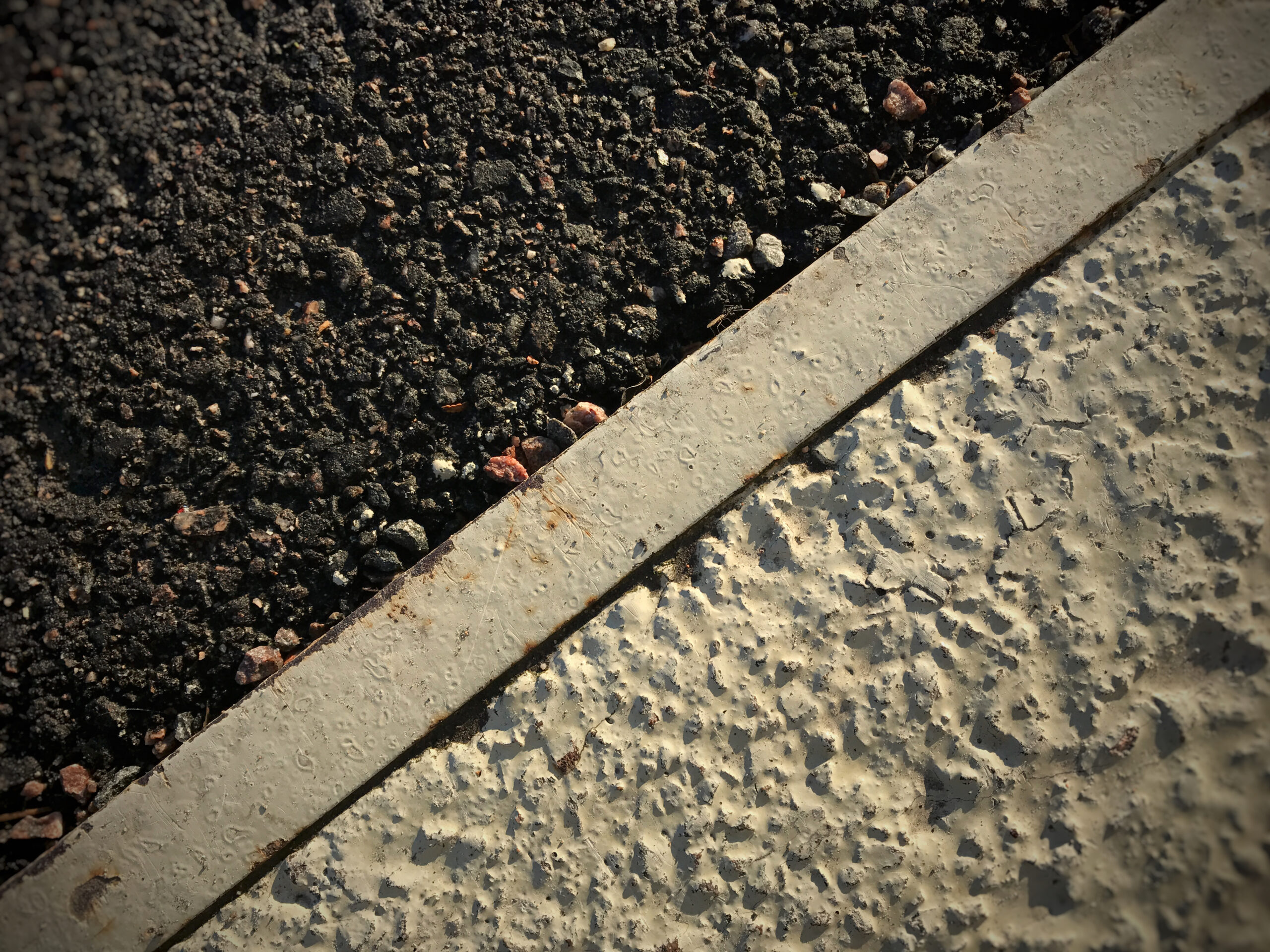
There’s something deeply satisfying about a newly paved driveway or parking lot. The jet-black surface looks flawless. You may be eager to get full use out of it. But walking, driving, or parking too soon can lead to costly damage that undermines the fresh finish you just invested in.
The key lies in timing. Asphalt doesn’t harden instantly. It needs time to settle and cure properly before it can handle foot traffic and the weight of vehicles. Rushing the process can cause cracks, tire marks, or permanent indentations on the surface.
This guide walks you through exactly when it’s safe to walk, drive, or park on new asphalt. With the correct information and a little patience, you can protect your investment and extend the life of your pavement.
Why Timing Is Critical for New Asphalt
Fresh asphalt may appear solid within hours of being poured, but much of the curing process occurs beneath the surface. That early period is when the material is still soft and vulnerable.
What Happens if You Use It Too Soon?
- Walking on asphalt before it dries can leave scuffs or footprints on the surface.
- Driving can create tire marks, uneven textures, or grooves on the road.
- Parking compresses the same spot repeatedly, often leading to dips and soft spots that worsen over time.
All of these issues reduce the lifespan of your asphalt and increase the chances of needing touch-ups or repairs sooner than expected.
Why Waiting Saves You Money
When you allow the asphalt to cure properly, it becomes stronger and more durable over time. That means fewer cracks, better resistance to weather, and less frequent maintenance. Waiting a few extra hours or days is a small price to pay for years of long-term performance from your pavement, which is part of knowing how to maintain pavement after mill pave.
Understanding the Asphalt Curing Process
To determine when your asphalt is ready, it’s helpful to understand what “curing” really means. Often confused with drying, these are two different stages.
Drying vs. Curing
- Drying happens first. This is when the surface becomes firm enough for light use. It usually takes between 24 and 48 hours.
- Curing is the gradual hardening of the entire pavement layer. This process can last anywhere from six months to a full year, depending on environmental conditions.
Just because the surface appears dry does not mean it’s ready for heavy traffic or parked vehicles.
What Asphalt Is Made Of
Asphalt is a mix of:
- Bitumen (a sticky, black binder made from crude oil)
- Aggregates (gravel, sand, and stone)
- Minerals and fillers for added strength
Over time, the oils in the bitumen evaporate, causing the mixture to harden. This slow change gives asphalt its final structure and stability. Environmental factors, including temperature, wind, and humidity, affect the duration of this process. You can walk on the surface fairly early, but real strength takes weeks and months to develop fully.
What Factors Affect Asphalt Curing Time?
Not all asphalt cures at the same pace. Here are the main things that can speed up or slow down the process, giving you an idea of how long does mill pave take.
- Temperature: The ideal curing temperature ranges between 70°F and 75°F. Hot temperatures above 80°F can keep the surface softer longer by slowing the evaporation of oils. Colder weather, with temperatures under 50°F, slows everything, including drying.
- Humidity: High humidity keeps moisture trapped in the asphalt surface, preventing it from drying effectively. Wait times are often extended by 24 to 48 hours in these conditions.
- Pavement Thickness: A typical residential driveway is typically 2 inches thick, while commercial lots often range from 4 to 6 inches. Thicker pavement takes longer to cure.
- Weather Conditions: Rain during the drying stage can delay the entire process by several days. Strong winds or consistent sunlight can help dry the surface more quickly. Still, they don’t always affect the deeper layers where accurate curing takes place.
- Installation Quality: Even the best timing won’t help if the asphalt isn’t properly laid. High-quality materials, good compaction, and an even sub-base all contribute to a consistent, longer-lasting finish.
When Can You Walk on New Asphalt?
Walking seems harmless, but your footsteps apply more pressure than you might think, especially if you’re wearing shoes with heels or cleats.
General Recommendation: Wait at least 24 hours before walking on new asphalt.
In Less-Than-Ideal Conditions: If it’s humid, cold, or there has been rain, wait up to 48 or 72 hours.
How to Walk Safely:
- Stick to flat-soled shoes.
- Avoid bike kickstands, strollers with thin wheels, or dragging anything heavy.
- If you absolutely must cross, try to do so lightly and quickly. However, in most cases, waiting a day or two is your best course of action.
When Can You Drive on New Asphalt?
Driving too soon is one of the leading causes of early tire marks and surface blemishes on new pavement.
General Recommendation: Wait at least 72 hours before driving on new asphalt.
When to Wait Longer: Hot weather slows down the curing process. In these cases, wait up to 7 days. If the driveway is shaded or takes longer to dry, add extra time, which is part of knowing how to maintain pavement after mill pave.
Safe Driving Tips:
- Avoid quick turns or hard braking.
- Drive gently and in a straight line if you’re using the surface for the first time.
- Do not allow delivery trucks or heavy vehicles on it for at least a week.
When Can You Park on New Asphalt?
While driving causes momentary pressure, parking concentrates weight on one spot, which is much worse for uncured pavement.
General Recommendation: Wait at least 14 days (2 weeks) before parking on new asphalt.
When to Wait Even Longer: For RVs, trailers, and heavy-duty vehicles, wait 30 days or more. If you notice even a slight give or softness in the ground, extend the timeline.
Pro Parking Tips:
- Switch up your parking spots to avoid compressing one area.
- Use plywood or support pads under heavy tires for added protection.
- Avoid parking anything with leaky fluids, like old cars or lawn equipment.
Patience during this stage significantly reduces the risk of ruining your driveway’s structure and appearance.
How to Protect Your New Asphalt During the Curing Period
A great way to keep your pavement in top shape is to inspect it regularly. Look for signs of significant damage. If you notice wide cracks or depressions, these may be the signs parking lot needs asphalt overlay.
Good Habits:
- Sweep away debris often to prevent surface staining and moisture retention.
- Fix any oil or gasoline leaks from vehicles immediately to avoid softening the pavement.
- Minimise heavy traffic during the first month whenever possible.
Consider Sealcoating:
- Apply your first sealcoat around 30 days after installation, weather permitting.
- This layer helps block UV rays, resist moisture, and prevent oxidation from speeding up wear.
Taking these simple steps will help preserve the look and feel of your pavement for years.
Safe Usage Checklist for New Asphalt
Here’s a visual summary to help you remember when and how to use your asphalt safely:
| Action | Recommended Wait Time | Precautions |
| Walking | 24–48 hours | Wear soft shoes; avoid anything sharp or heavy. |
| Driving | 72 hours+ | No sharp turns; no heavy vehicles. |
| Parking | 14+ days | Use different spots; avoid leaks; add boards under tires. |
| Sealcoating | ~30 days | Wait for consistent dry weather and hire a professional. |
Real-World Example: A Lesson in Patience
A commercial business in a humid Texas city repaved its parking lot and followed professional guidance down to the hour. They waited:
- 3 days to allow customer vehicles
- 14 days to begin regular parking
- A full 30 days before scheduling their first sealcoat
As a result, they avoided over $1,000 in repair fees from early tire damage and soft-spot depressions. Not only did the owner protect their investment, but they also ensured minimal disruptions for customers. Such an outcome is possible when you trust the timeline and allow the materials to mature at their natural pace.
Frequently Asked Questions
How long should I wait before walking on new asphalt?
It is highly recommended to wait at least 24 to 48 hours before walking on any newly laid asphalt surface. During this initial period, the asphalt is still soft and vulnerable to damage. Walking on it too soon can easily leave behind permanent scuffs, footprints, or other surface marks that will compromise the smooth, uniform finish of your new pavement.
When is it safe to drive on new asphalt?
Before driving any passenger vehicles on new asphalt, you should wait a minimum of 72 hours, or three full days, to allow the surface to harden sufficiently. However, this timeline should be extended in certain weather conditions. Suppose you are experiencing particularly hot or humid weather. In that case, it is best to wait up to 7 days, as the heat can keep the asphalt softer for a more extended period, making it more susceptible to tire marks and indentations from vehicle movement.
How long will it take before I can park on the new asphalt?
To protect the curing asphalt and prevent permanent soft spots or dips, allow no vehicles to park on the new surface for at least 14 days. Furthermore, when subjecting the pavement to heavier loads, such as RVs, work vans, or trailers, ensure you wait a minimum of 30 days to allow it to preserve its strength and longevity.
What is the difference between asphalt drying and curing?
Drying is the initial phase, during which the surface hardens enough for light use, typically within 24 to 72 hours. Curing is the longer chemical process that strengthens the entire asphalt layer, often taking 6 to 12 months, depending on weather conditions.
Why is it essential to let asphalt cure properly?
Curing is key to long-term performance. It allows the asphalt to harden fully, ensuring greater strength, resistance to damage, and a longer lifespan. Using it too soon can weaken the surface, leading to premature failures and expensive repairs.
How can I protect my new asphalt during the curing period?
Avoid heavy loads, sharp turns, and parking near unsupported edges to prevent surface damage. Clean up oil or fuel spills immediately, as they can weaken the asphalt. After approximately 30 days, apply a high-quality sealcoat to protect the surface from UV rays, moisture, and early wear.
Protecting Your Asphalt is About Smart Timing
Using your new asphalt at the right time is essential if you want it to last. Whether it’s knowing when to walk, drive, or park, every step in the early stages of curing affects the final durability and appearance of your surface. Allowing your pavement enough time to dry and cure properly means fewer repairs and a finish that lasts in the long run.
Suppose you need expert advice or are ready to start your next paving project. In that case, Asphalt Coatings Company offers helpful guidance and quality service from start to finish.


